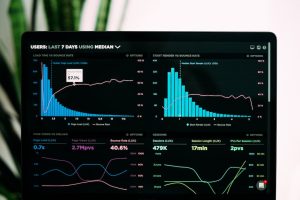Leverage is a powerful tool in the forex market that can amplify both gains and losses. For traders who are new to the market, understanding leverage can be a daunting task. However, with a little bit of knowledge, traders can harness the power of leverage to their advantage.
In simple terms, leverage is the amount of money that a trader can borrow from their broker to open a larger position than their account balance would typically allow. The amount of leverage available to a trader is determined by the broker and can vary from 1:1 to 500:1 or more, depending on the broker and the type of account.
For example, if a trader has an account balance of $1,000 and their broker offers a leverage of 100:1, the trader can open a position worth $100,000. This means that for every $1 of the trader’s own money, they are borrowing $99 from the broker.
Leverage can be beneficial to traders because it allows them to control larger positions than they would be able to with their own funds. This can potentially increase profits, as even small movements in the market can result in significant gains. However, it is important to remember that while leverage can magnify gains, it can also magnify losses.
The key to understanding leverage in forex is to understand the concept of margin. Margin is the amount of money that a trader must have in their account to open and maintain a leveraged position. The amount of margin required is determined by the broker and is usually expressed as a percentage of the position size.
For example, if a trader wants to open a position worth $100,000 with a leverage of 100:1, they would need to have a margin of $1,000 in their account. This is calculated as $100,000 divided by 100 (the leverage) multiplied by 1% (the margin requirement).
It is important for traders to understand that margin is not a fee or a cost, but rather a deposit that is held by the broker as collateral for the leveraged position. This means that traders must ensure that they have enough margin in their account to cover any potential losses.
One of the risks associated with leverage is the possibility of a margin call. A margin call occurs when a trader’s account balance falls below the required margin for their open positions. When this happens, the broker may issue a margin call, requiring the trader to deposit more funds into their account to cover the margin requirement. If the trader is unable to do so, the broker may close out their positions to prevent further losses.
To avoid margin calls, traders should always ensure that they have enough margin in their account to cover their leveraged positions. This can be achieved by using stop-loss orders to limit potential losses and by monitoring the market closely to identify any potential risks.
In conclusion, leverage is a powerful tool in the forex market that can amplify both gains and losses. Traders who understand leverage and margin can use this tool to their advantage, but it is important to remember that leverage can also increase the risk of losses. To use leverage effectively, traders should always ensure that they have enough margin in their account to cover their positions and should use stop-loss orders to limit potential losses.






